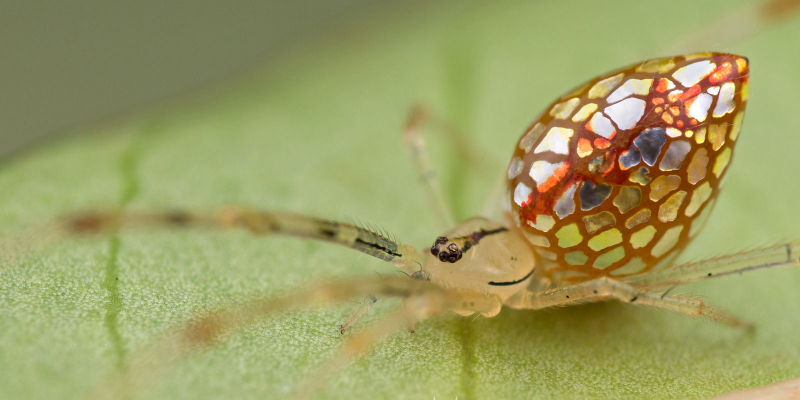Sequined/Mirror Spider
Thwaitesia nigronodosa, a different native of Australia, can be found in Queensland's rainforests. Due to its disco ball-like butt, it has been given the names Sequined Spider or Mirror Spider, like the majority of other species of the genus Thwaitesia. Specialized cells termed guanocytes, which are crystallized versions of the digestive waste product guanine that the spider would typically excrete, are found throughout its trunk. The joined cells create a kind of feces mosaic, with the guanine reflecting light to make it appear silver, like a mirror. When concealing in a rainforest's wet undergrowth, this glittering keister is extremely useful.
The Mirror Spider has yet another protective mechanism: if disturbed or forced to leave its web rapidly, it may immediately conceal the guanocyte cells, turning its exterior color into one that resembles the muddy ground. It is thought that it does this by contracting the muscles that surround the guanocytes, however, the exact mechanism is unclear.
In addition to its remarkable mirror-like appearance and quick camouflage abilities, Thwaitesia nigronodosa possesses a unique hunting strategy. Unlike many other spiders that actively seek out prey or construct elaborate webs, the Mirror Spider is a sit-and-wait predator. It selects a suitable location amidst the rainforest foliage and remains motionless, relying on its excellent camouflage to blend in with the surroundings. When unsuspecting insects come close enough, the spider strikes with lightning speed, capturing its prey with its agile front legs. This hunting method allows the Mirror Spider to conserve energy while still securing its next meal. Its ability to swiftly change its coloration and conceal its sparkling guanocyte cells gives it a significant advantage in avoiding predators and capturing prey, making it a true marvel of adaptation in the Australian rainforests.













